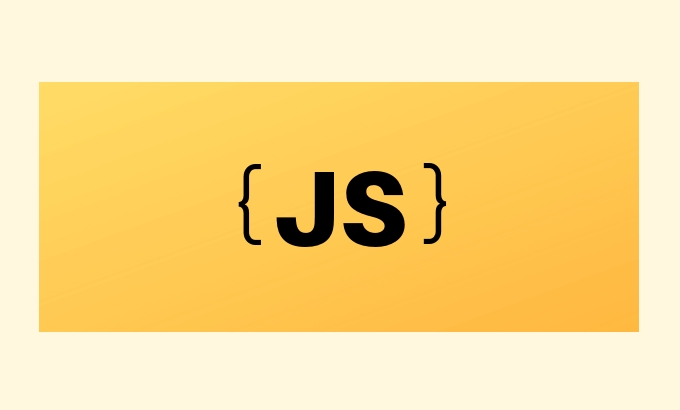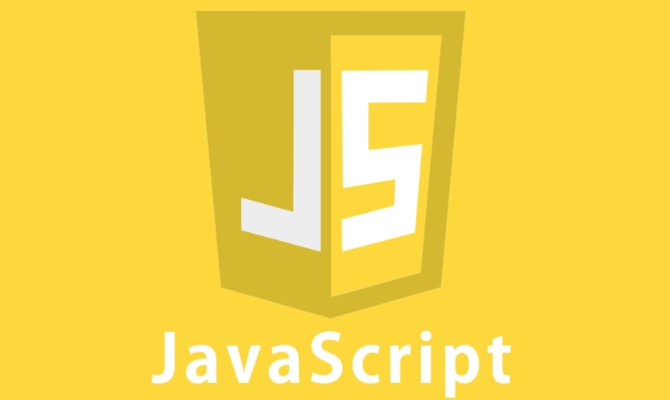 Web Front-end
Web Front-end
 JS Tutorial
JS Tutorial
 Understanding Immediately Invoked Function Expressions (IIFE) in JavaScript
Understanding Immediately Invoked Function Expressions (IIFE) in JavaScript
Understanding Immediately Invoked Function Expressions (IIFE) in JavaScript
Jul 04, 2025 am 02:42 AMIIFE (Immediately Invoked Function Expression) is a function expression executed immediately after definition, used to isolate variables and avoid contaminating global scope. It is called by wrapping the function in parentheses to make it an expression and a pair of brackets immediately followed by, like (function() { /code / })(); . Its core uses include: 1. Avoid variable conflicts and prevent duplication of naming between multiple scripts; 2. Create a private scope to make variables within the function invisible; 3. Modular code to facilitate initialization without exposing too many variables. Common writing methods include versions passed with parameters and ES6 arrow function versions, but note that expressions must be used, ending semicolons cannot be omitted, and function declarations cannot be directly executed. Mastering IIFE can help you understand old project structures and improve code security.

IIFE (Immediately Invoked Function Expression) is a very practical concept in JavaScript that is a bit confusing for beginners. Simply put, it is a function expression that is executed immediately after definition. This writing method can achieve variable isolation and avoid contaminating the global scope. It is often used in modular code or initialization scripts.

What is IIFE?
The core of IIFE is: the function is executed immediately after it is defined . Its basic structure is as follows:

(function() {
// The code here will be executed immediately})(); This function is wrapped in brackets and becomes an expression, and then called it immediately after a pair of brackets () . The advantage of this is that variables inside the function are not "leaked" into the global scope.
For example:

var name = "global";
(function() {
var name = "local";
console.log(name); // Output "local"
})();
console.log(name); // Output "global" It can be seen that the internal name variable does not affect the external variable of the same name.
Why use IIFE?
There are several main reasons for using IIFE:
- Avoid variable conflicts : especially when multiple script files are loaded together, prevent duplicate naming.
- Create a private scope : variables defined inside the function are not visible to the outside, forming a closed environment.
- Modular code : Initialization work can be completed without exposing too many variables.
For example, early jQuery plug-ins often used IIFE to encapsulate their own logic to prevent conflicts with other libraries:
(function($) {
// Use $ to operate jQuery safely
})(jQuery); This way, even if $ is occupied by other libraries, it can be ensured that inside the function it represents jQuery.
How to write an IIFE?
The writing method is actually very fixed, just remember a few key points:
- Functions must be expressions (so they must be wrapped in brackets)
- Finally, add a pair of brackets to execute it
Common writing methods include:
(function() { /* code */ })(); // Common writing methods (function() { /* code */ }()); // Also legal, the effect is the sameYou can also pass in with parameters:
(function(a, b) {
console.log(ab);
})(10, 20); // Output 30In ES6, you can also use the abbreviation of arrow functions:
(() => {
console.log("Hello from IIFE");
})(); However, it should be noted that this in the arrow function inherits from the outer scope, which is slightly different from other functions.
Notes and common mistakes
Although IIFE is useful, there are several error-prone places when writing:
- Forgot parentheses : If the function is not wrapped in brackets, writing
(function(){})()directly will cause an error. - Missing ending semicolons : Especially in compressed code, it may lead to syntax errors.
- Misunderstanding the difference between function declarations and function expressions : function declarations cannot be executed directly with brackets.
For example, the following writing method will cause an error:
function() {
// code
}(); // An error occurred! Because this is a function declaration, not an expressionThe correct way to do this is to turn it into an expression:
(function() {
// code
})(); // correctBasically that's it. Mastering IIFE can not only help you understand the writing of many old projects and plug-ins, but also allow you to write cleaner and safer JavaScript code. Although there are now module systems (such as ES Modules), IIFE is still very useful in some specific scenarios.
The above is the detailed content of Understanding Immediately Invoked Function Expressions (IIFE) in JavaScript. For more information, please follow other related articles on the PHP Chinese website!

Hot AI Tools

Undress AI Tool
Undress images for free

Undresser.AI Undress
AI-powered app for creating realistic nude photos

AI Clothes Remover
Online AI tool for removing clothes from photos.

Clothoff.io
AI clothes remover

Video Face Swap
Swap faces in any video effortlessly with our completely free AI face swap tool!

Hot Article

Hot Tools

Notepad++7.3.1
Easy-to-use and free code editor

SublimeText3 Chinese version
Chinese version, very easy to use

Zend Studio 13.0.1
Powerful PHP integrated development environment

Dreamweaver CS6
Visual web development tools

SublimeText3 Mac version
God-level code editing software (SublimeText3)
 How to make an HTTP request in Node.js?
Jul 13, 2025 am 02:18 AM
How to make an HTTP request in Node.js?
Jul 13, 2025 am 02:18 AM
There are three common ways to initiate HTTP requests in Node.js: use built-in modules, axios, and node-fetch. 1. Use the built-in http/https module without dependencies, which is suitable for basic scenarios, but requires manual processing of data stitching and error monitoring, such as using https.get() to obtain data or send POST requests through .write(); 2.axios is a third-party library based on Promise. It has concise syntax and powerful functions, supports async/await, automatic JSON conversion, interceptor, etc. It is recommended to simplify asynchronous request operations; 3.node-fetch provides a style similar to browser fetch, based on Promise and simple syntax
 JavaScript Data Types: Primitive vs Reference
Jul 13, 2025 am 02:43 AM
JavaScript Data Types: Primitive vs Reference
Jul 13, 2025 am 02:43 AM
JavaScript data types are divided into primitive types and reference types. Primitive types include string, number, boolean, null, undefined, and symbol. The values are immutable and copies are copied when assigning values, so they do not affect each other; reference types such as objects, arrays and functions store memory addresses, and variables pointing to the same object will affect each other. Typeof and instanceof can be used to determine types, but pay attention to the historical issues of typeofnull. Understanding these two types of differences can help write more stable and reliable code.
 React vs Angular vs Vue: which js framework is best?
Jul 05, 2025 am 02:24 AM
React vs Angular vs Vue: which js framework is best?
Jul 05, 2025 am 02:24 AM
Which JavaScript framework is the best choice? The answer is to choose the most suitable one according to your needs. 1.React is flexible and free, suitable for medium and large projects that require high customization and team architecture capabilities; 2. Angular provides complete solutions, suitable for enterprise-level applications and long-term maintenance; 3. Vue is easy to use, suitable for small and medium-sized projects or rapid development. In addition, whether there is an existing technology stack, team size, project life cycle and whether SSR is needed are also important factors in choosing a framework. In short, there is no absolutely the best framework, the best choice is the one that suits your needs.
 JavaScript time object, someone builds an eactexe, faster website on Google Chrome, etc.
Jul 08, 2025 pm 02:27 PM
JavaScript time object, someone builds an eactexe, faster website on Google Chrome, etc.
Jul 08, 2025 pm 02:27 PM
Hello, JavaScript developers! Welcome to this week's JavaScript news! This week we will focus on: Oracle's trademark dispute with Deno, new JavaScript time objects are supported by browsers, Google Chrome updates, and some powerful developer tools. Let's get started! Oracle's trademark dispute with Deno Oracle's attempt to register a "JavaScript" trademark has caused controversy. Ryan Dahl, the creator of Node.js and Deno, has filed a petition to cancel the trademark, and he believes that JavaScript is an open standard and should not be used by Oracle
 Handling Promises: Chaining, Error Handling, and Promise Combinators in JavaScript
Jul 08, 2025 am 02:40 AM
Handling Promises: Chaining, Error Handling, and Promise Combinators in JavaScript
Jul 08, 2025 am 02:40 AM
Promise is the core mechanism for handling asynchronous operations in JavaScript. Understanding chain calls, error handling and combiners is the key to mastering their applications. 1. The chain call returns a new Promise through .then() to realize asynchronous process concatenation. Each .then() receives the previous result and can return a value or a Promise; 2. Error handling should use .catch() to catch exceptions to avoid silent failures, and can return the default value in catch to continue the process; 3. Combinators such as Promise.all() (successfully successful only after all success), Promise.race() (the first completion is returned) and Promise.allSettled() (waiting for all completions)
 What is the cache API and how is it used with Service Workers?
Jul 08, 2025 am 02:43 AM
What is the cache API and how is it used with Service Workers?
Jul 08, 2025 am 02:43 AM
CacheAPI is a tool provided by the browser to cache network requests, which is often used in conjunction with ServiceWorker to improve website performance and offline experience. 1. It allows developers to manually store resources such as scripts, style sheets, pictures, etc.; 2. It can match cache responses according to requests; 3. It supports deleting specific caches or clearing the entire cache; 4. It can implement cache priority or network priority strategies through ServiceWorker listening to fetch events; 5. It is often used for offline support, speed up repeated access speed, preloading key resources and background update content; 6. When using it, you need to pay attention to cache version control, storage restrictions and the difference from HTTP caching mechanism.
 Leveraging Array.prototype Methods for Data Manipulation in JavaScript
Jul 06, 2025 am 02:36 AM
Leveraging Array.prototype Methods for Data Manipulation in JavaScript
Jul 06, 2025 am 02:36 AM
JavaScript array built-in methods such as .map(), .filter() and .reduce() can simplify data processing; 1) .map() is used to convert elements one to one to generate new arrays; 2) .filter() is used to filter elements by condition; 3) .reduce() is used to aggregate data as a single value; misuse should be avoided when used, resulting in side effects or performance problems.
 JS roundup: a deep dive into the JavaScript event loop
Jul 08, 2025 am 02:24 AM
JS roundup: a deep dive into the JavaScript event loop
Jul 08, 2025 am 02:24 AM
JavaScript's event loop manages asynchronous operations by coordinating call stacks, WebAPIs, and task queues. 1. The call stack executes synchronous code, and when encountering asynchronous tasks, it is handed over to WebAPI for processing; 2. After the WebAPI completes the task in the background, it puts the callback into the corresponding queue (macro task or micro task); 3. The event loop checks whether the call stack is empty. If it is empty, the callback is taken out from the queue and pushed into the call stack for execution; 4. Micro tasks (such as Promise.then) take precedence over macro tasks (such as setTimeout); 5. Understanding the event loop helps to avoid blocking the main thread and optimize the code execution order.





